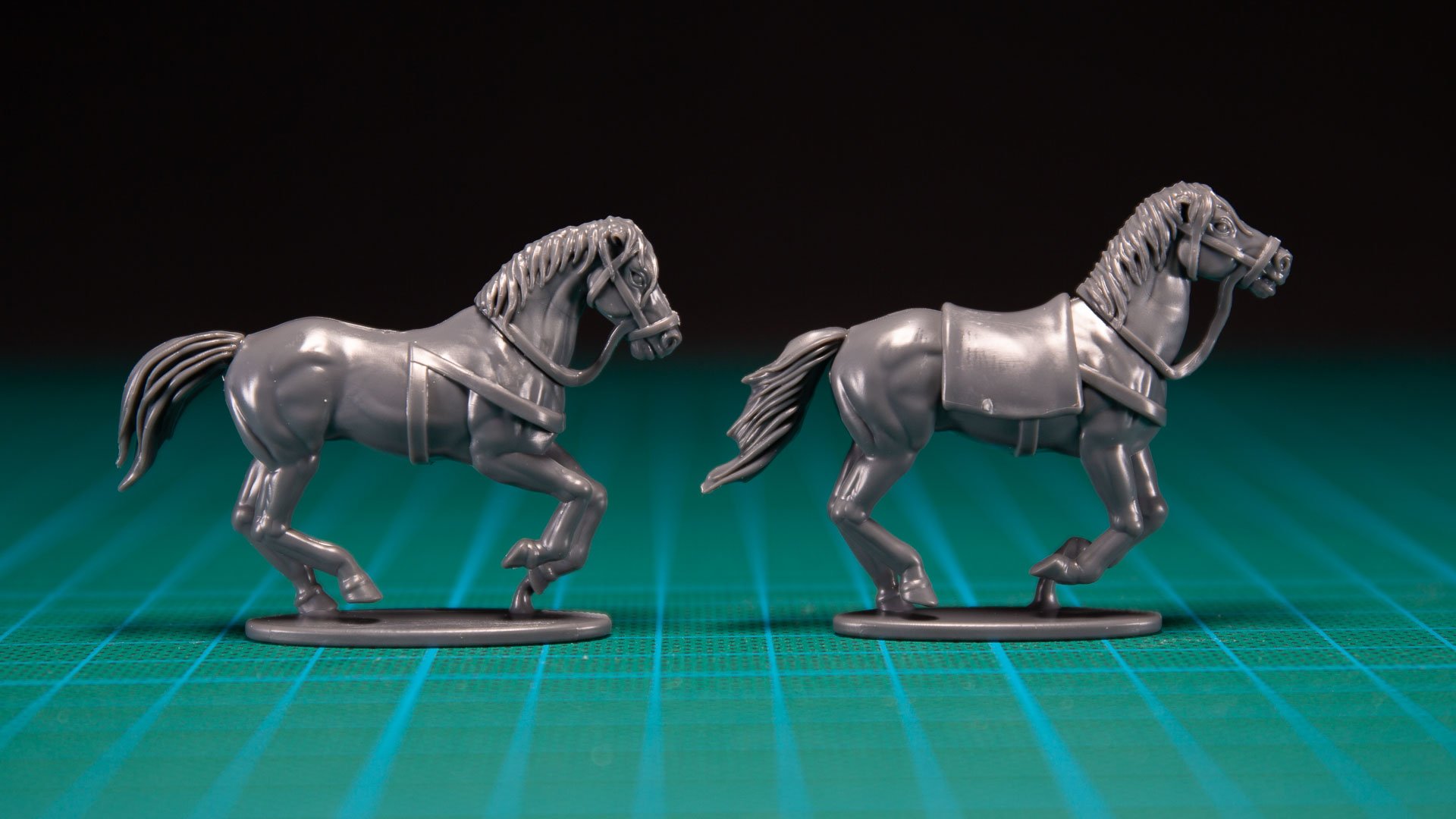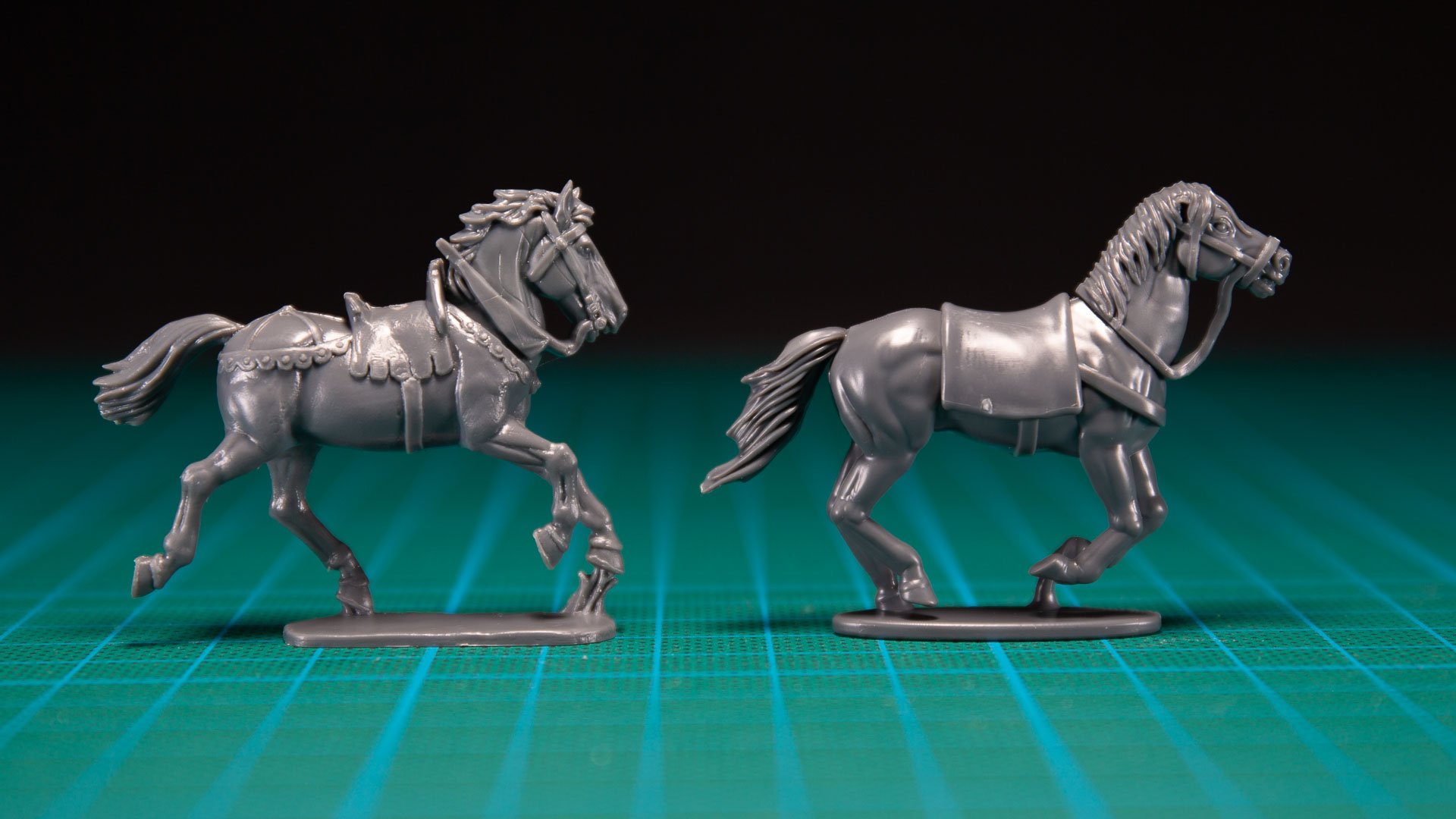More interesting cavalry with horses from Wargames Atlantic
Horses are usually an annoyance for me in this hobby. Partially because I’m not very good at painting them but also because a lot of sculpts just aren’t that good.
Wargames Atlantic seems to have a solution for at least one of my problems.
Mauryan cavalry attack Seleucid phalangites somewhere along the Indus river, 304 BC.
I don’t like model horses. There. I said it. I don’t like painting them. I find it difficult and I’m never really happy with the result. I often don’t like the sculpts themselves. A lot of the time they seem like an afterthought in otherwise nice ranges. That’s why I’m quite excited by these. They look really nice and are fairly cheap. I’ll be using them as replacements for horses in other ranges that I’m not too fond of, in this case as ancient Indian cavalry. I’m not sure that is the intended purpose of these, I think they are more of a base for future rider kits from Wargames Atlantic, but that is how I intend to use them.
Scope of the range
Horses were first domesticated some 5000-6000 years ago and were first used in warfare during the bronze age, pulling carts, around 2000 BC. That makes horses usable for basically all historical wargaming with the caveat that horses have been bred and evolved quite a lot during those 4000 years. In other words I wouldn’t harness these horses in front of a Sumerian battle cart. I’d be happy to use these from the dawn of proper cavalry, i.e. a warrior mounted on horseback, during the Neo-Assyrian Empire around 9th - 7th century BC. The steeds of the Assyrians probably weren't as large as Wargames Atlantics offerings but that’s probably true for a large part of history. Swedish mounts of the Caroleans in the 18th century were mere ponies by today's standards for example.
A limiting factor of these sculpts though is the tack of the horses. This is obviously something that varied greatly over time and place. For many armies out there what is sculpted on the horses is just wrong or you would have to add so much anyway that they are basically useless. When riders start having proper saddles, stirrups or armour, these aren't very useful either unless those details are moulded with the rider.
Sculpting
The sculpting is good on these. The proportions look correct and the musculature of the horse is nicely sculpted. My only real criticism is about the heads, they don’t look as realistic as the body does. The tack around the mouth seems a bit off too, I don’t know much about horses but it just doesn’t look right.
Below are some pictures of the horses with and without the saddle cloth. Unfortunately I didn’t have much to compare them with except the Wars of the Roses horse from Perry Miniatures.


Working with the miniatures
There are three bodies on a sprue with a choice of four heads. The bodies are in two parts that easily fit together and the head fits into a hollow so you basically can’t get anything wrong here. The head is cleverly designed so the reins cover the joint between body and head. The only place where the joint between the two body halves can be seen is over the back of the horse (called the ”croup” according to Google). I missed that when assembling mine but that could easily be covered up with greenstuff to get a smooth result.
On the sprue there is also a saddle cloth but I didn’t use this as then the riders didn’t fit. I attached the riders (ancient Indians from The Miniature Company, now sold by Eureka Miniatures UK) by pinning them to the body. Then I sculpted new saddle cloth using some putty.
Now we come into some of the problems with the tack on these horses. As these were supposed to be ancient Indian steeds they should have their forelock arranged as a plume and there should be a lot of elaborate decorations on the tack. Since I had already spent quite some time attaching the riders and sculpting the saddlecloth I didn’t bother with these details and figured I use paint to convey some of this in the finished rider. You’ll probably have to do similar compromises with your horses depending on what you decide to use them as.
As mentioned earlier I don’t really like painting horses so lately I’ve started using the ”oil paint wipe” method. Basically you paint the horse in a basecoat of paint, cover it in a darker oil paint mix, let it dry for 15 to 20 minutes and then wipe the oil paint off. What’s left is oil paint that has dried in the recesses giving the horse a really nice defined look. I’m not really friends with this method yet but it worked well for these horses. The oil stained the basecoat in a nice way, it brought out the sculpted muscles and defined areas around the tack. All in all I’m happy with the result.
Price
A box of 18 horses costs £25 so that’s £1,38 per horse. Plastic horses sold separately like this is not that common, I could only find similar offerings from Perry Miniatures and Conquest games. They both cost £3,50 for a sprue of 3, so £1,16 per horse.
Conclusion
The price is a bit higher than other comparable plastic products but since changing horses like this is a bit of a luxury maybe price isn’t quite as important as it usually is.
These are nice and well made sculpts that need minimal assembly and the level of detail makes painting easy. Although it is a hassle to get them to look like the horses that fits your army I can’t really blame them for not looking exactly like my little genre of wargames horses. Instead I would argue that the generic nature of these horses is to their advantage. If you can ignore that they don’t wear the exact right tack these would fit into a large range of genres and time periods. I am very happy with my unit, despite making some compromises and spending more time and money on these than if I had just used the horses they came with.
A little disclaimer
I have worked for Wargames Atlantic in the past (you can see the results here). These equines though were paid for with my own money and Wargames Atlantic have had no influence over what is written here, these are all my own opinions.



Though small in number, Sweden's 16th-century urban population contributed significantly to military conflicts through their superior equipment. Let’s see how city-dwelling burghers transformed from merchants to warriors and how I recreated these historic troops as miniature figures.